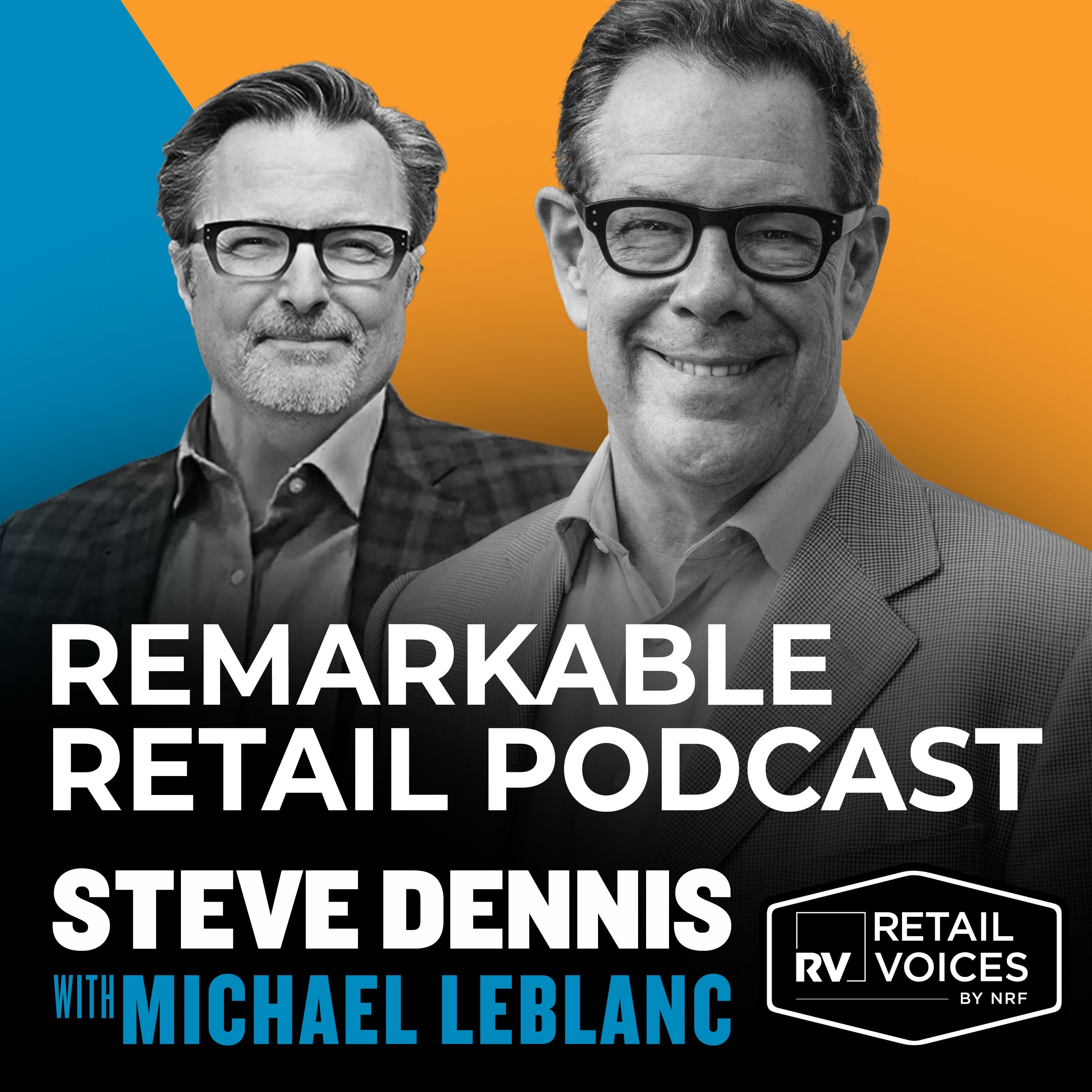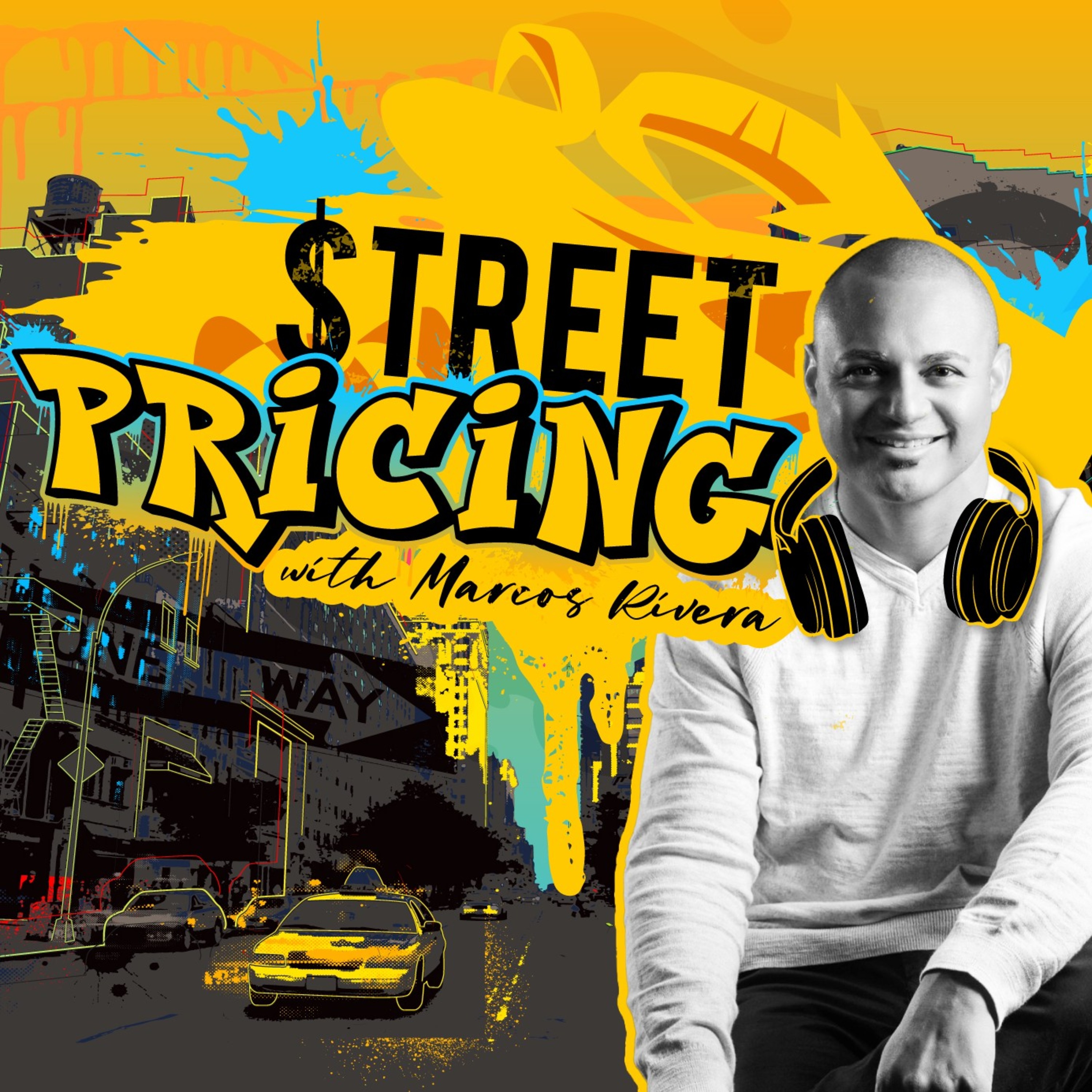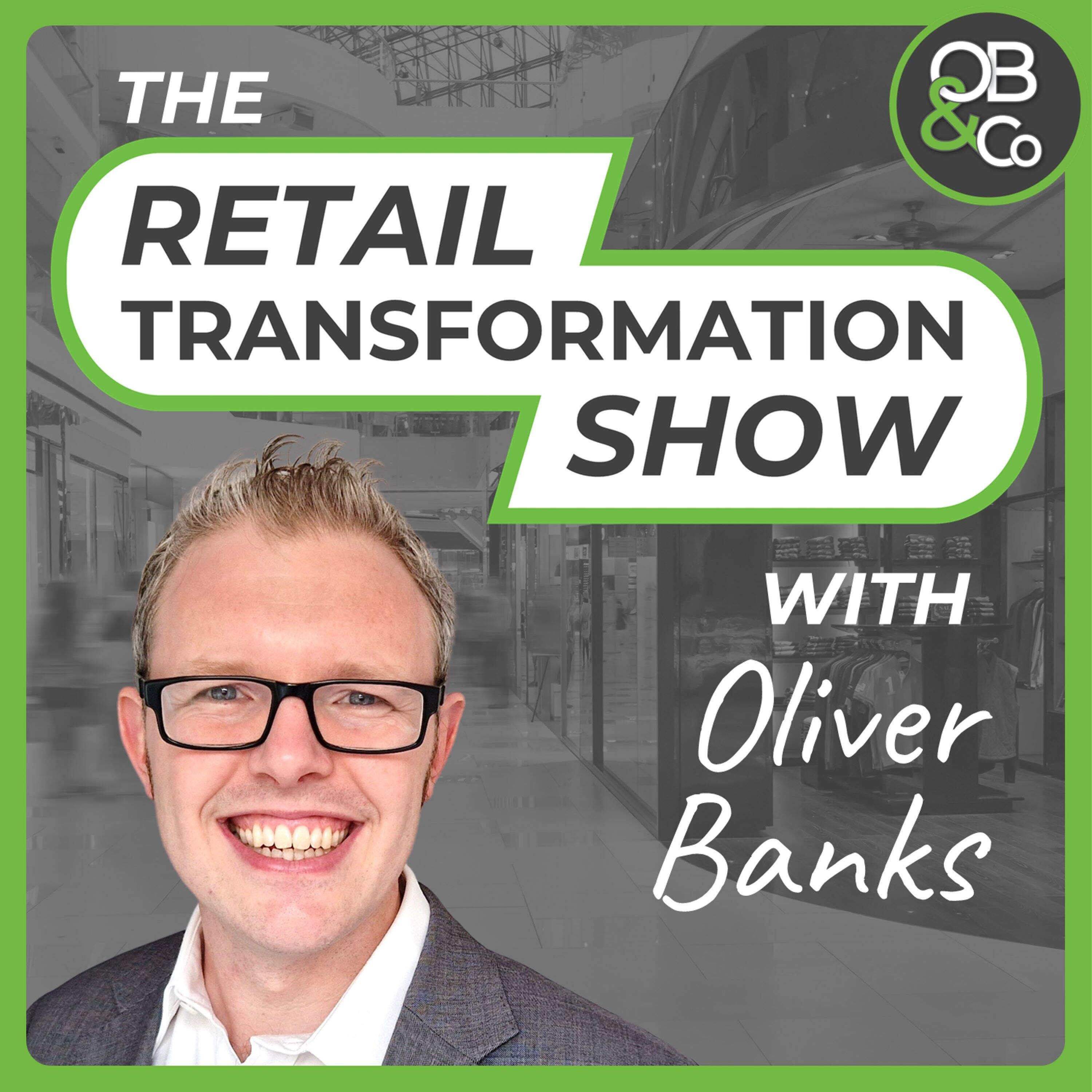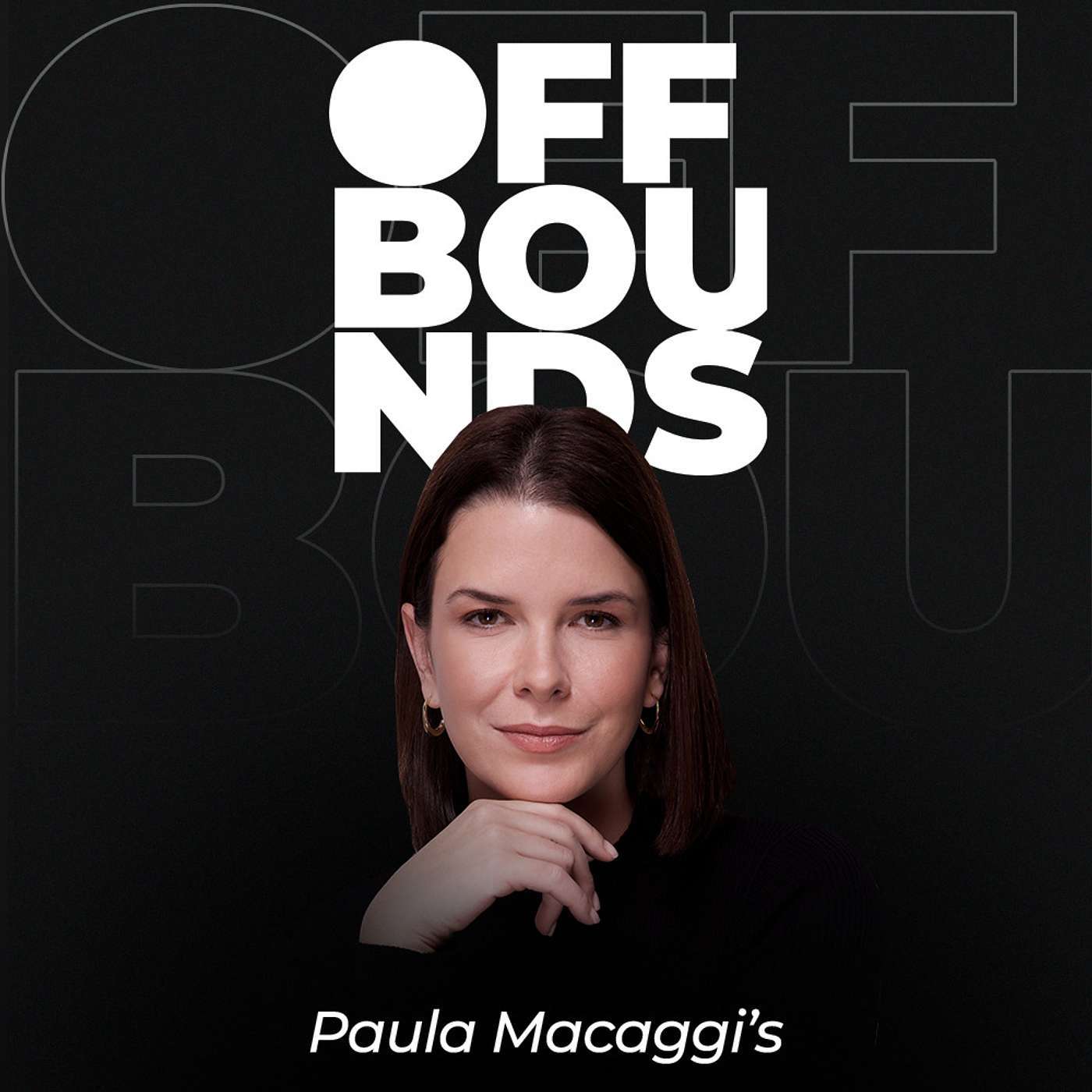
Pricing Heroes: The Retail Pricing Podcast for Practitioners & Executives
Pricing Heroes: The Best Retail Pricing Podcast for Practitioners and Executives
Your go-to pricing podcast for transforming strategy, boosting margins, and leading with confidence.
Pricing Heroes is the leading retail pricing podcast for pricing practitioners and retail executives focused on building smarter strategies, protecting margins, and earning customer trust. Each month, we feature exclusive interviews, case studies, and practical insights to help you implement the most effective pricing strategies for today’s retail environment.
Whether you're managing promotional calendars, navigating price perception, or scaling AI-powered pricing systems, Pricing Heroes offers the expert guidance and real-world perspective you need to lead with confidence.
🎙 Each episode includes:
- Expert Interviews: Candid conversations with top pricing professionals and retail innovators
- Case Study Analysis: Behind-the-scenes strategy breakdowns from across the industry
- Actionable Takeaways: Practical insights you can apply immediately in your organization
We explore the full landscape of pricing in retail — spanning e-commerce and in-store, global brands and regional players, and categories from fashion and grocery to electronics and beyond. Topics include:
- Innovative pricing technologies and emerging trends, like AI-powered pricing platforms
- Data-driven consumer behavior analysis
- Strategic solutions to complex pricing challenges
- Tactics to boost profit margins and market share
- Pricing topics making headline news
- Building and transforming pricing functions
Join a growing community of pricing professionals and industry leaders who tune into Pricing Heroes — the trusted pricing podcast for anyone shaping the future of retail strategy.
🗓 New episodes drop the last week of every month.
📲 Listen on Spotify, Apple Podcasts, Google Podcasts, or your favorite platform.
Sponsored by Competera — the leading pricing platform empowering retailers with AI-driven, customer-centric pricing solutions that maximize profitability while strengthening customer loyalty.
Pricing Heroes: The Retail Pricing Podcast for Practitioners & Executives
The Beauty of Strategic Pricing: Inside flaconi’s Pricing Transformation with Corina Manea
In this episode of Pricing Heroes, we speak with Corina Manea, Vice President of Commercial at flaconi, Germany’s leading online beauty retailer. Corina shares her journey from Team Lead of Pricing to VP, and how she helped flaconi evolve from manual pricing processes to AI-powered optimization. She explains what makes pricing in luxury beauty so complex, how flaconi balances speed with strategic control, and why pricing teams are uniquely positioned to drive commercial transformation.
Key Topics:
- Career development across pricing and commercial functions
- Building pricing maturity — from spreadsheets to scalable systems
- Balancing pricing agility with brand integrity in beauty retail
- Experimentation, cross-functional collaboration, and internal advocacy
- How WeCommerce culture fuels pricing and team growth
Recommended Resources:
Connect with Corina Manea:
----------
Get your free copy of Get Ready for the Future Of Pricing with our A-Z Guide.
For more information about AI pricing solutions, check out our Corporate sponsor Competera.ai.
Aaron: Hello, and welcome to Pricing Heroes, a podcast sponsored by Competera. This is a series of interviews with best-in-class retail pricing experts driving bottom-line metrics for major retail brands and the industry as a whole.
Today's guest is Corina Manea. Corina is the Vice President of Commercial at flaconi, Germany's leading online retailer for beauty and perfume. Over the past six and a half years at flaconi, she has played a pivotal role in shaping the company's commercial and pricing strategy. She's risen through the ranks from Team Lead of Pricing and Forecasting to her current leadership role, overseeing campaign and onsite management, category management, commercial planning, and pricing.
She brings over a decade of experience in pricing, analytics, and commercial planning, with prior roles at e-commerce giants like Wayfair and Zalando. Throughout her career, Corina has brought together pricing analytics, promotional strategy, and demand forecasting to deliver consistent top- and bottom-line growth.
Corina, welcome to the show.
Corina: Thanks a lot for having me. I'm excited.
Aaron: We are too. Would you like to begin by telling us a little bit about yourself and how you found your way into pricing?
Corina: I originally come from Romania, where I completed my bachelor's in Business Administration. Back then, I was still figuring out what I wanted to do in my career, and that program gave me broad exposure to all kinds of business-related fields. After that, I moved to Berlin for my master’s in International Finance. At the time, I was quite fascinated by the stock market and imagined building a career in that space.
But I quickly realized it wasn’t for me. I missed the more dynamic, creative side of business — where you have strategy on one side, customer behavior analytics on the other, and it all comes together.
Then I stumbled upon a job description at Zalando for a Junior Pricing Manager, and it instantly clicked. I remember reading it and thinking, This is exactly what I’ve been looking for. Even during the interview, I had this gut feeling like, Wow, this could really be my job.
From there, it’s been a steep but really exciting learning curve. I fell in love with e-commerce — I love the fast pace, constant evolution, and how measurable everything is. What really hooked me was seeing how small changes in pricing can have a huge impact on customer perception, competitiveness, and ultimately the financial performance of the business.
It’s really that perfect mix of analytical thinking and strategic influence that keeps me passionate about this field. I took on several roles, exploring opportunities at big e-commerce companies, but most roles eventually led me back to pricing in one way or another.
Aaron: That’s really amazing. It’s not surprising that you’re big on analytics and have worked in e-commerce — I can’t imagine having the same level of access to customer behavior in brick-and-mortar retail as you do online. Is that what attracted you to e-commerce? You just really like the digital side, or is there something more?
Corina: For sure. First of all, it’s the amount of data you can access to make informed decisions, and also how fast-paced it is. In brick-and-mortar retail, you can’t make quick changes, whereas in digital, it never gets boring.
Aaron: I think that’s true. I’ve worked in communications for a very long time, and I can say that I prefer digital communications to everything else because you can track everything — end-to-end customer journeys. It’s phenomenal. So, I totally understand that.
What attracted you to flaconi specifically?
Corina: First of all, pricing — for sure. I started as a Team Lead for Pricing, and of course also the beauty industry. I’ve always loved beauty products, and it felt like I could really merge the two. It’s been quite the journey, to be honest.
When I first joined, the team was very small — only three people — and the work was very manual. That required a lot of hands-on work, which I really loved. But I soon realized that we needed to automate and streamline everything. That became my first big mission — and it was very exciting, for sure.
Aaron: Yeah, that’s really interesting — a team of three and fully manual. That can be challenging, especially for an e-commerce company.
So, you’ve been at flaconi for six years and you’ve grown from a Team Lead in Pricing to VP of Commercial. Can you tell us a little bit about that entire journey?
Corina: As I mentioned, we started with very manual processes, and automating everything was the first goal. We actually managed to build an in-house pricing tool — that was the first huge win for us. We learned a lot during that time and managed to remove most of the manual work. And since the company was growing at full speed around us, the journey became even more exciting.
Soon after that, I took on more responsibility and stepped into the role of Head of Pricing and Commercial Planning. That meant expanding my focus beyond pricing and diving into the planning side of the business — setting company targets, forecasting, and working more cross-functionally with marketing, category management, supply chain, and even operations.
That was quite new to me, but an exciting step. It allowed me not only to grow my skill set, but also to bring a pricing lens into the broader planning strategy. Pricing obviously has a big impact on setting up company targets, right?
Then came another big chapter. Flaconi was going through some major organizational and strategic changes, especially toward the end of 2022. That opened a new opportunity for me to step into the VP Commercial role, where I took on even more scope — including campaign and category management teams.
To be honest, I found both topics extremely exciting, and I loved how I could then shape the pricing strategy even more — supporting both campaign performance as well as steering brands and categories to achieve their targets.
At the same time, the company was rethinking its overall processes and strategy. For me, that meant a whole new learning curve — this time, more focused on company steering and strategy.
And yeah, honestly, I’ve loved every minute of it. It’s been super challenging and incredibly rewarding, especially since our results have been amazing ever since. We’ve been constantly exceeding our targets, which brings even more satisfaction.
Aaron: That sounds like an inspiring career journey — especially within a single company. It’s always great to hear about someone growing into new opportunities.
Would you say you had to proactively seek those opportunities, or did it feel like a natural progression? For someone else working in pricing right now, how can they identify opportunities and position themselves to move into the next role — one that expands their scope and allows them to grow as a professional?
Corina: I think it’s important to always stay curious in your role and to challenge the processes. It’s also really important to maintain relationships with other teams — to understand how you can help improve their processes. That often leads to natural transitions.
I wasn’t actively looking for the next role. I mean, of course everyone wants to grow — and if the company offers that opportunity, it’s amazing. But by actively staying in touch and understanding what others are doing, you learn — and you can become the natural choice for new opportunities.
That’s something I love about flaconi — the company is always promoting internal growth. They always check first to see if someone internally could fill a role, rather than immediately hiring externally. That creates great growth opportunities for employees.
Aaron: That sounds great. And honestly, you sound like the ideal pricing expert — because when I talk to a lot of pricing professionals (especially those working in consulting), one of the challenges they always mention is the presence of barriers or silos between pricing and other functions.
But you’re talking about being extremely proactive — looking across teams, identifying opportunities, questioning processes, and finding ways to improve integration. So it’s no surprise to me that you’ve excelled at flaconi. Your mindset seems very focused on building cross-functional relationships, which is so crucial to pricing success.
Corina: In the beginning, when I started my career in pricing, I also felt it might be too restrictive because you often work in a silo. But in the end, pricing affects so many other teams throughout the company — supply chain management, marketing, performance marketing.
It’s really important to understand those connections. That’s how you can improve the pricing strategy even further.
Aaron: And would you say that your background in pricing has uniquely positioned you with skills that others may not have when stepping into a commercial leadership role?
Corina: For sure. Especially the way we built the commercial department here — with campaign management and planning under one umbrella — it’s crucial to understand the pricing strategy, because it affects both.
So in that sense, my pricing background definitely gave me an advantage. I can see how any small change in pricing can affect both planning and targets, as well as campaign performance. That perspective really gave me a push for the role, I would say.
Aaron: What have been some of the biggest challenges you’ve faced while leading pricing at flaconi? And maybe you can also share a few of your biggest wins?
Corina: I’d say every year at flaconi came with its own set of challenges — which, in the end, is probably what made the journey so exciting.
In the early days, the biggest hurdle was building our own pricing tool from scratch and making sure it could actually scale. Having an in-house tool sounds great — and it was a win for sure — but in reality, it required constant resources and upkeep. And since we were such a small team back then, it meant a lot of prioritizing and constantly balancing between keeping things running and leaving enough space to innovate, test, and implement new ideas.
We were also developing our own demand-based pricing model with data science at the time, and that involved a fair share of trial and error. We learned a lot during that period.
Later on, as we massively expanded our assortment and onboarded a lot of mass-market brands, a new kind of complexity hit us — the long tail of products. Suddenly we were dealing with a huge volume of low-margin, low-rotation SKUs, and trying to figure out the right price points while still achieving growth and profitability targets. That wasn’t easy.
At the same time, we were committed to protecting the brand image of our premium labels and ensuring sustainable growth. So we were constantly walking a tightrope between ambition and brand integrity.
Then in 2022, we reshaped our company strategy and kicked off a major internationalization push — and the challenge shifted again. Our beloved in-house pricing tool, the one we had built and optimized over the years, started to struggle. We added more countries, our pricing logic became more sophisticated, and the tool became hard to maintain — and too slow to keep up with market dynamics.
To be honest, in the beauty industry, speed is everything. That was the tipping point for us to switch to an external solution. We partnered with Competera, and it really changed the game for us.
Suddenly, we had more time to focus on strategic topics — experimentation, testing — and as a result, performance improved significantly. We had even more ambitious goals on the table, but we managed to exceed expectations. That was a huge win for us.
Aaron: I’ve worked for a lot of tech companies — SAP, EPAM, and a few other smaller services companies — and the question always comes down to build versus buy.
Having worked in those companies, I’ve built internal tools for communications, and I think people often underestimate the cost and time involved. When you work for a global systems integrator and know you have the talent to build something, there’s a tendency to want to do it. But there were so many times when it just made more sense to buy a tool.
Yes, we could build it if we really wanted to — but the infrastructure and maintenance cost can be excessive. Sometimes buying the industry standard, or the best-in-class solution, is just the smarter move. That said, the process of building something still has value. It helps you understand what’s required, what you’re looking for, and what the challenges are.
So I think there are definitely lessons to be learned either way.
Corina: For sure.
Aaron: So, you mentioned that speed is essential in luxury — and I think that makes sense. One of my past CEOs used to say, “Speed kills… when you don’t have it.”
Besides speed, how does flaconi use pricing to differentiate itself and support long-term profitability?
Corina: What sets flaconi apart from other beauty retailers is our commitment to embracing change and innovation. We’re constantly evolving — challenging our processes to meet not only financial goals but also to maintain supplier relationships, improve collaboration between teams, and ensure a smooth, strategic pricing process.
Pricing is obviously a key strategic lever for us — not just for hitting short-term revenue goals, but for setting our brand apart and ensuring long-term, sustainable growth.
In a highly competitive market like beauty, we see pricing as a way to communicate value while still protecting the positioning of our premium assortment. Many people think it’s about being the cheapest — but it’s not. It’s really about creating the best value for your customers and offering high-quality products at a fair price.
We work with a dynamic pricing setup that allows us to react quickly to market trends and customer behavior — including factors like seasonality. We use a combination of inputs — from stock levels to demand signals to competitive data. What we’re trying to do is predict the optimal price.
At the same time, we’ve implemented strong pricing thresholds for our assortment to maintain our brand image and protect margins.
What helps us stay ahead is a strong focus on testing and learning — whether that’s through new campaign mechanics, price elasticity experiments, or cross-category optimization. This approach gives us the agility to adapt quickly while still keeping long-term goals in sight.
It’s really this combination of flexibility, structure, and strategic focus that enables us to drive sustainable profitability. We constantly monitor results to ensure growth doesn’t come at the cost of margin. Many companies make that mistake, but for us, it’s really important to push growth on both the top and bottom lines.
And of course, last but not least, I’d say it’s our unique combination of a people-first approach and dynamic culture. It means we’re not just following trends — we’re creating success together. That’s what really distinguishes flaconi in the beauty retail landscape.
Aaron: That’s a great answer. And when you mentioned experimentation, my follow-up question was going to be — and you’ve already touched on this — but it can be very challenging to persuade leadership to support experimentation, especially when it could impact top-line or bottom-line performance.
Could you say more about how you secure buy-in from leadership? Are you persuading them, or is that support coming from the top down? And how do you balance experimentation with consistency in your commercial approach?
Corina: A bit of convincing is always needed, of course. But we always rely on data.
Whenever we propose an experiment, we present very clear evidence — why we want to do it and what we expect it to achieve. Fortunately, we’re doing really well as a company, so that gives us some room for experimentation.
We also monitor results very closely. If we see several days or weeks of poor performance, we’re not afraid to stop the test. We don’t experiment just for the sake of experimenting — we make sure we protect growth and margins. We try to make our experiments as successful as possible, but we also believe that learning from mistakes is essential.
That’s what helps us grow further. Experimentation is necessary to ensure continued progress.
Aaron: So essentially it’s about relying on data, clearly defining your objectives, narrowing the scope of what you’re testing, and then applying the insights to your strategy.
Flaconi also talks a lot about its “WeCommerce” approach. Can you explain what this is and how it shapes the company’s commercial strategy?
Corina: Yes. I think the WeCommerce approach is really what sets flaconi apart. It highlights goal-oriented, collaborative action. We actively cultivate strong partnerships — both externally and internally.
This philosophy implies a strong internal culture and collaborative relationships with brands and partners. It leads to more integrated and effective business operations.
For example, in our commercial team, everyone plays a crucial role — from working students to senior members. We always listen to feedback, encourage people to challenge processes, and bring new ideas. That’s what makes our collaboration unique — we really value human interaction.
We have daily stand-ups, we prioritize and solve challenges together, we give updates — all of that ensures full transparency and a continuous flow of information. It means that all functions are aligned and working in the same direction.
What makes our work meaningful isn’t just delivering beauty products — it’s about creating genuine connections. Each transaction represents a relationship that we value. And through this approach, we’ve significantly strengthened our company culture. Everyone is committed to our success and makes the everyday experience fun.
It transforms traditional online shopping into something more meaningful — like a community, where everyone plays a role in creating beauty experiences.
Aaron: So it sounds like flaconi puts people at the center of the brand.
Corina: For sure.
Aaron: Okay, so you have people at the center — but I assume success in an e-commerce company doesn’t come from people alone. It’s also about technology.
You’ve mentioned pricing automation and some demand forecasting algorithms. Could you elaborate more on the role technology plays in how you serve customers and stay ahead in such a competitive luxury beauty market?
Corina: We’re constantly building on flaconi’s “beauty in your pocket” mobile-first strategy, so technology is really a key pillar of how we serve customers and stay ahead in the digital landscape.
We’re very agile and fast in everything we do. We prioritize simple, scalable solutions over complexity. Once we truly understood the importance of that, it marked a major turning point in our success.
Our core value is customer centricity — we’re focused on delivering exactly what our customers need. And we actively encourage trying new things, because it’s essential for growth. Our open failure culture also supports learning from every attempt.
Especially in beauty, where trends shift fast and customer expectations are high, speed and adaptability are everything. That’s why we don’t see technology as a support function — it’s a key enabler that helps us move quickly and stay ahead of the curve.
Whether it’s pricing, campaign setup, planning, or product discovery, we’re investing in tools and infrastructure that allow us to iterate fast and react to market signals — ideally in real time. That agility helps us constantly learn, test, and improve.
It’s also important to acknowledge — as you mentioned earlier — where it makes sense to build in-house and where it’s smarter to outsource. Because in the end, speed is everything.
Aaron: Wonderful. Thank you.
So, what advice would you give to pricing professionals who aspire to grow in their careers?
Corina: What helped me the most — and what I’d really recommend — is being honest. That means voicing both your ideas and your concerns openly, and always challenging the status quo.
Don’t be afraid to question how things are done and to suggest improvements. At flaconi, we have a strong feedback culture, and I truly believe that’s a key driver of both personal and team growth. It creates space to learn, reflect, and get better every day.
I also think it’s incredibly important to give yourself time. There’s often pressure to climb the ladder quickly, but real growth happens when you allow yourself to make mistakes, ask questions, and figure out what really excites you. It’s not just about moving fast — it’s about building a strong foundation and understanding where your strengths really lie.
And finally, always stay curious. Pricing doesn’t exist in a vacuum. Understanding the wider industry, new technologies, consumer trends, and what’s happening around you will help you stay ahead and keep learning.
Be open to inspiration from unexpected places — that’s often where the best ideas come from.
Aaron: Thank you for that advice. I think our audience will really appreciate it.
So, final question: What books, podcasts, or other resources would you recommend to our community of pricing professionals?
Corina: One of the first books I read when I started in pricing was Predictably Irrational. It’s one of those books that fundamentally shifts the way you think about pricing and consumer behavior in general.
For anyone starting out in the field, I think it’s really an eye-opener. It helps you move beyond the traditional idea that people make purely rational, value-driven decisions — and instead shows how emotion, perception, and context play a massive role in how people respond to prices.
What I loved about the book is that it’s really actionable. As a young professional, it gave me so many ideas for testing in pricing. I definitely recommend it.
And beyond books, I’d say nothing beats talking to your peers — whether it’s through LinkedIn groups, pricing communities, or conferences. Real-life cases and informal exchanges have been the most valuable learning experiences for me. So I highly recommend that.
Aaron: Do you have any favorite pricing communities or events that you frequently attend?
Corina: Yes — I attend quite a lot of e-commerce conferences. There are some great ones in Berlin. I like them because they offer a broader perspective than just pricing.
Of course, there are also specialized pricing conferences, but for me, being part of the commercial team, I really value that wider perspective.
Aaron: Awesome. Well, Corina, thank you for being on the show and sharing your insights with us today.
Corina: Thanks a lot for having me.
Aaron: I hope you enjoyed our conversation with Corina Manea. Be sure to follow and connect with our guest on LinkedIn.
For more information about AI pricing solutions, visit competera.ai. Remember to subscribe to the show on your favorite podcast app to make sure you don’t miss future episodes — and please help us spread the word by leaving a five-star review so others can discover the show.
If you found the insights on this show valuable, I encourage you to check out the Retail Pricing Community on LinkedIn, where you’ll find a community of pricing experts sharing their expertise and the latest trends.
Thanks for joining us on this episode of Pricing Heroes. Take care — until next time.
Podcasts we love
Check out these other fine podcasts recommended by us, not an algorithm.

Pricing Evolution Podcast
Brendan Hodge
Impact Pricing
Mark Stiving, Ph.D.
Remarkable Retail Podcast
Michael LeBlanc, Steve Dennis
The Modern Retail Podcast
Digiday
Let's Talk Pricing Podcast
The Professional Pricing Society
Street Pricing with Marcos Rivera
Marcos Rivera
Rooted in Retail
Crystal Vilkaitis
The FMCG Guys
Dwyer Partners
Retail Transformation Show with Oliver Banks
Oliver Banks


